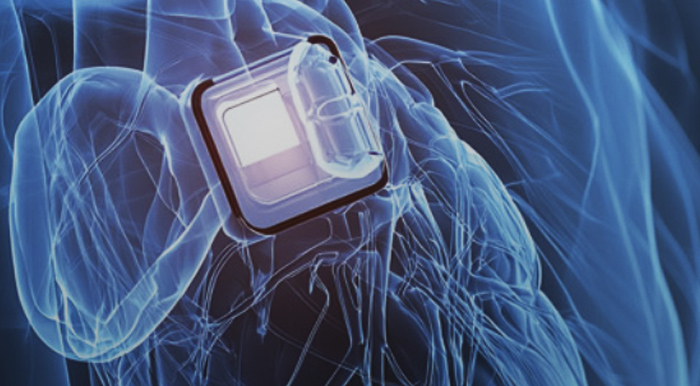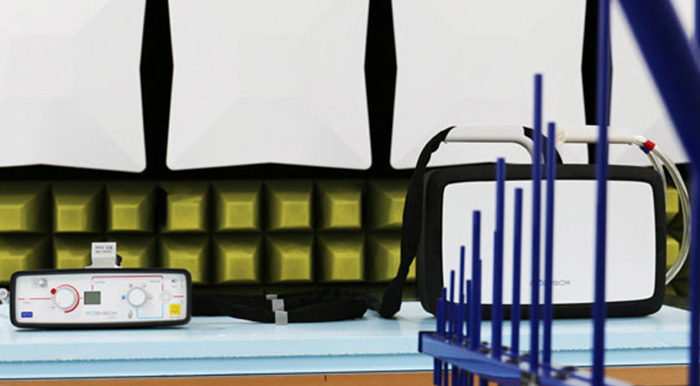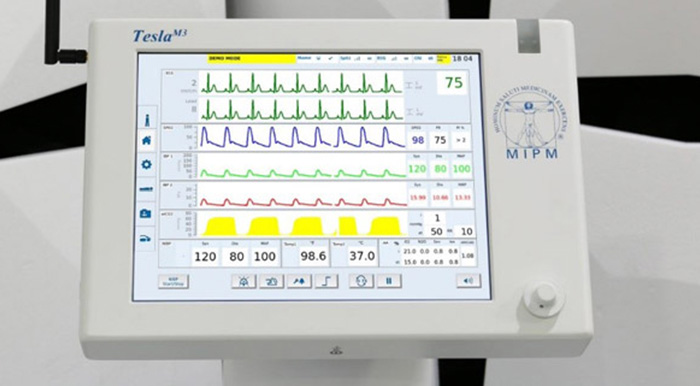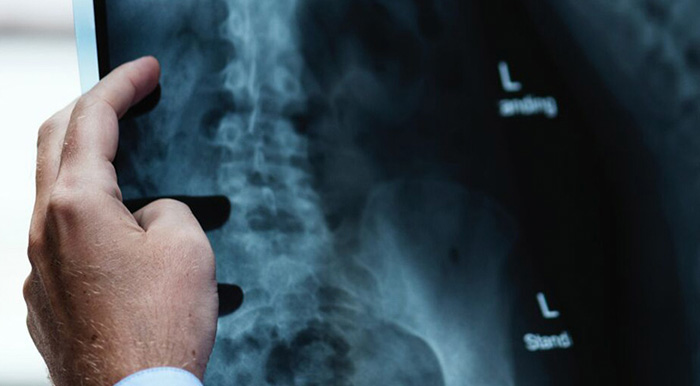SGS Germany GmbH is accredited by DAkkS (ILAC), as well as by the IECEE CB Scheme for testing active medical devices used in emergencies. The devices are tested in SGS’s Munich laboratory according to the standards IEC 60601-1-12 (Requirements for medical electrical equipment and medical electrical systems intended for use in the emergency medical services environment), EN 1789 (Medical vehicles and their equipment – Road ambulances), and EN 13718-1 (Requirements for medical devices used in air ambulances). SGS offers the full range of IEC 60601-1-12 product testing, related to the design and environmental, mechanical, and electromagnetic compatibility, as part of a comprehensive testing solution at one location.
The respective programs, parameters, and sequences for the tests are individually designed by our experienced test engineers in line with the manufacturer’s requirements.
Importance of IEC 60601-1-12
The IEC 60601-1-12 standard was first published in 2014 and is a harmonized standard under the IECEE CB Scheme and the FDA’s List of Recognized Consensus Standards. The IECEE CB Scheme is an international system for mutual recognition of test reports and certificates on the safety of electrical and electronic components, equipment, and products. The trend is showing a rapid increase in annual IEC 60601-1-12 certifications under the IECEE CB Scheme.
The European Commission will list IEC 60601-1-12 as a harmonized standard under the MDR as of May 2021 in its Official Journal publications M/575. This will serve as an alignment to the global regulatory requirements.
IEC 60601-1-12 has some similarities with certain requirements regulated in existing European standards, such as EN 1789 for ambulances and their equipment or EN 13718-1 for medical devices used in aircraft for patient transport.
IEC 60601-1-12 combines requirements for different applications (ambulances, helicopters, or aircraft) in one standard and should be considered as the authoritative standard for active medical equipment used in and on ambulances and at locations where emergency medical services are needed, for example at accident or crash sites.
Key design requirements
Many medical devices fall within the scope of IEC 60601-1-12, so manufacturers should be aware of the key design requirements:
- IEC 60601-1-12 includes specific specifications for the power supply of the equipment, depending on the intended use environment of the equipment.
- The equipment must fulfil the requirements of protection class II, which means that it must not use a protective earth conductor for overvoltage protection or must be powered internally by a battery.
- The power supply of the medical equipment must be able to provide an AC input tolerance of 85 to 110% of the rated voltage.
- Equipment that is to be powered by DC voltage (for example, from a vehicle battery) must also function under the following conditions:
• 30s dip from 12 V to 10 V for 12 Vdc rating and fluctuations between 12.4 V and 15.1 V
• 30s dip from 24 V to 20 V for 24 Vdc rating and fluctuations between 24.8 V and 30.3 V - If the medical equipment is to be used in airplanes, the devices must be able to operate with the following supplies:
• 14, 28, and 270 Vdc and
• 115/230 V at 400 Hz
To summarize, the design of the power supply parameters and the choice of components are essential aspects for compliance with the standard.
Protection against environmental influences
Unlike equipment used in professional environments such as hospitals, where temperature and humidity are largely stable, emergency medical service equipment must operate under changing environmental conditions, at least for the following periods of time:
- At least 20 minutes in a temperature range of –20 to +50 °C at an atmospheric pressure of 620 to 1,060 hPa and a relative humidity of 15 to 90%.
- The information displayed on the equipment for setting up the device, checking the equipment, or analyzing the results must be designed in such a way that it is easy to read at an illumination level of 10 to 10,000 lx, i.e., in twilight, as well as in full daylight.
- Depending on the various parameters for the use of the equipment, it must have a higher mechanical stability for operation in helicopters or airplanes in order to be able to withstand shocks, vibrations, or drops.
- Other design aspects include resistance to the ingress of water or solid foreign bodies and a higher degree of contamination.
- Fixed or permanently installed devices that are not moved by doctors and medical personnel during emergency use must have protection class IP22 in accordance with IEC 60529, while transportable devices must pass at least one test for protection class IP33 without losing their function and safety features.
- Resistance to ingress of foreign bodies and water is directly linked to design requirements to protect the operator and/or patient from electric shock.
Electromagnetic compatibility
The risk of electromagnetic interference must also be taken into account:
- Medical equipment used in emergency environments must not emit excessive electromagnetic radiation as it is important to avoid failure or malfunction of other equipment used in the vicinity of the emergency equipment.
- It must comply with the upper emission limits for Class B specified in CISPR 11:2009.
- In addition to the IEC 60601-1-2 requirements, electromagnetic compatibility tests according to RTCA DO-160G, Section 21, Category M must also be carried out for equipment used in aircrafts.
SGS Munich – Your Partner
A variety of different specifications and considerations are required to develop medical devices according to IEC 60601-1-12. SGS is your partner for time-saving, cost-effective, and successful testing and certification.
Contact
Armin Hudetz
t: +49 89 78 74 75-133
f: +49 89 12 50 40 64-133
E-Mail: This email address is being protected from spambots. You need JavaScript enabled to view it.
Customer Service Team
t: +49 89 78 74 75-222
f: +49 89 12 50 40 64-100
E-Mail: This email address is being protected from spambots. You need JavaScript enabled to view it.









